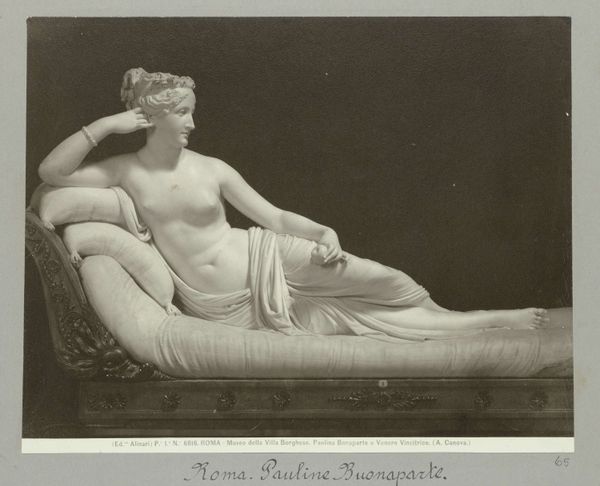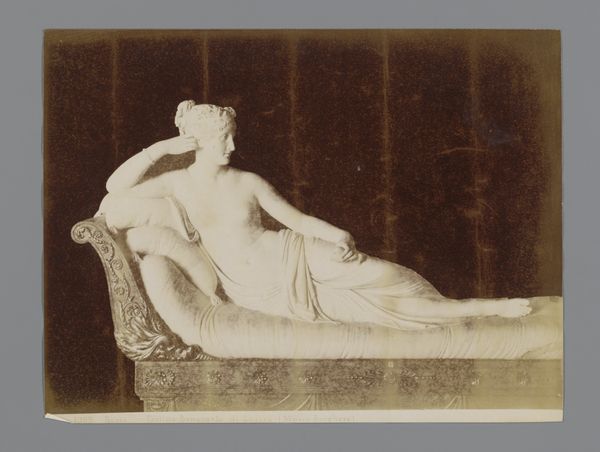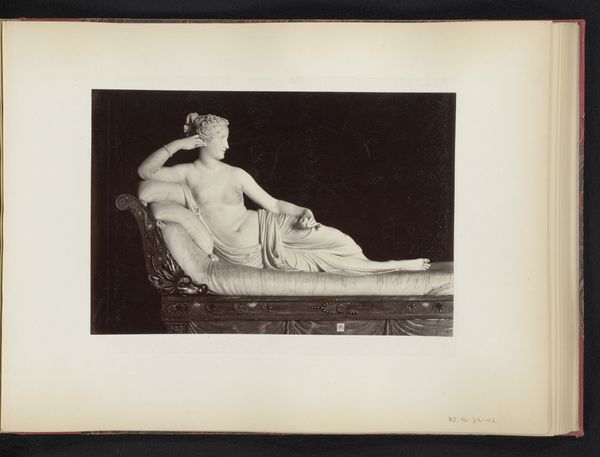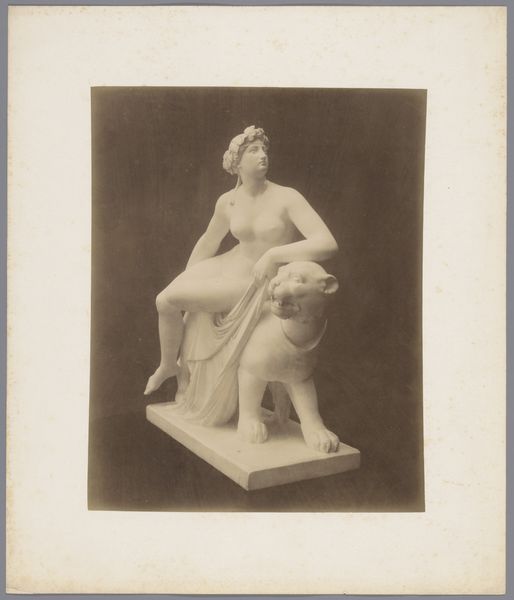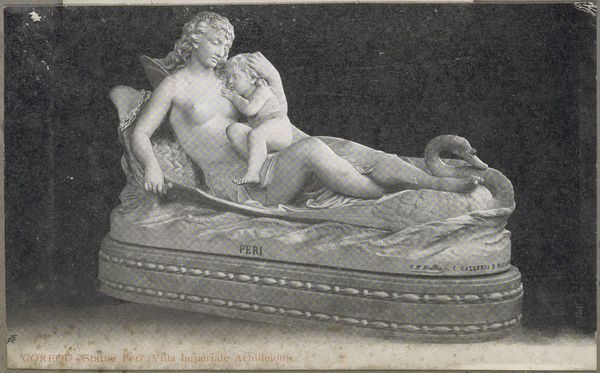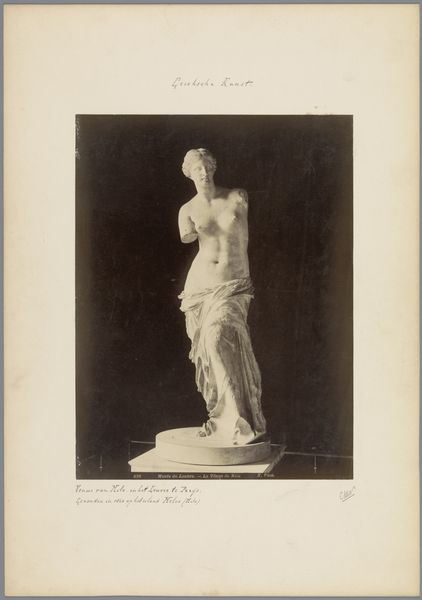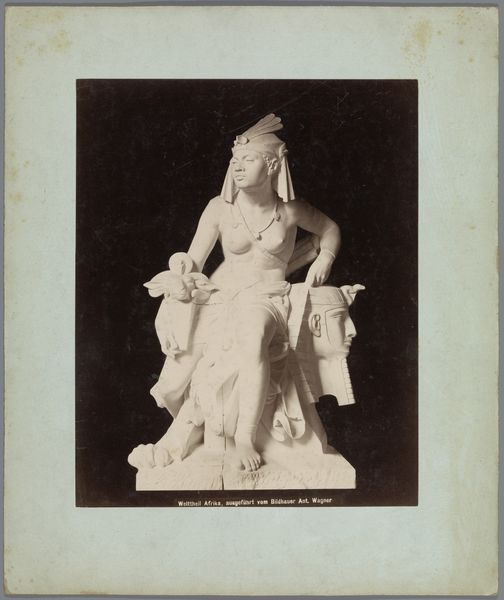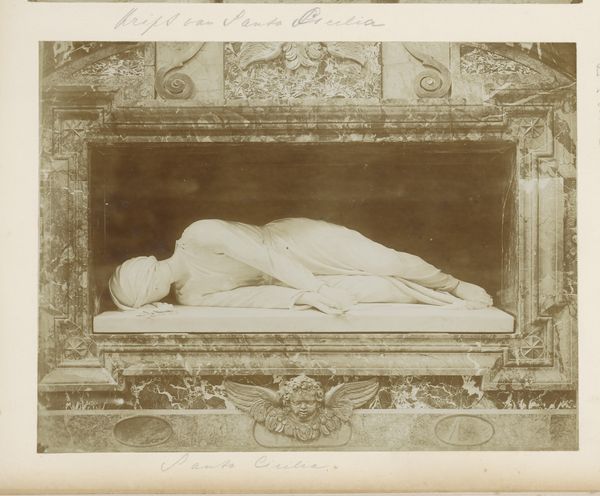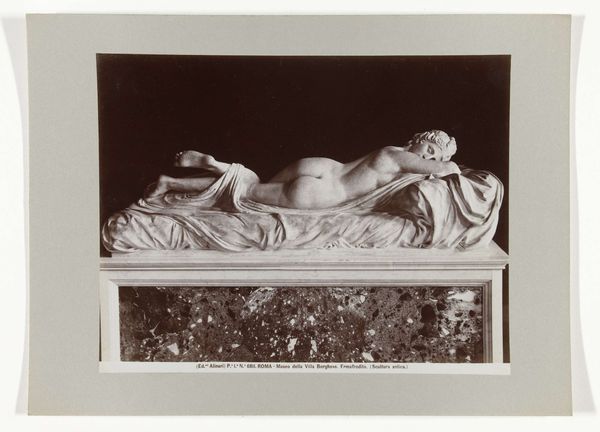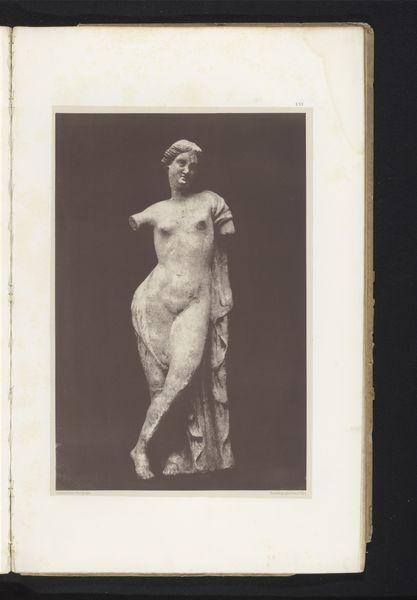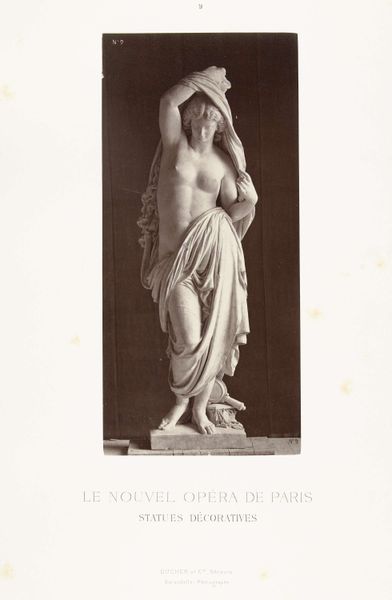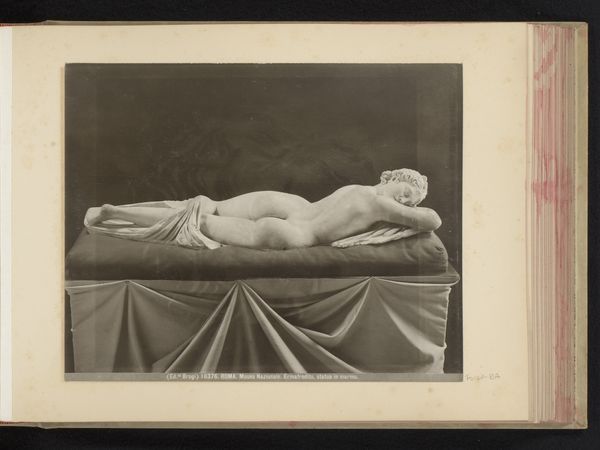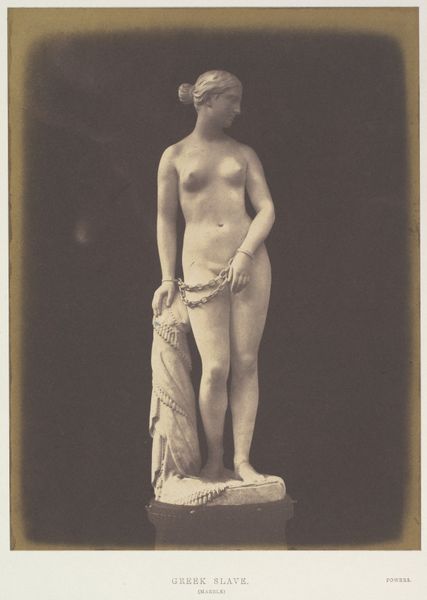
intaglio, photography, sculpture, marble
#
portrait
#
neoclassicism
#
intaglio
#
classical-realism
#
photography
#
sculpture
#
history-painting
#
academic-art
#
marble
#
nude
#
statue
Dimensions: height 191 mm, width 244 mm
Copyright: Rijks Museum: Open Domain
Editor: Here we have a photograph of a marble sculpture called *Pauline Bonaparte as Venus Victrix.* It was sculpted sometime before 1914. The subject is reclining, exuding a classical calmness. What first strikes you when you look at it? Curator: The photograph itself offers a layer of meaning, doesn't it? It captures a sculpture representing Pauline Bonaparte *as* Venus. Venus, the goddess, embodies beauty, love, and victory, yet the pose, especially mediated by the photograph, hints at something more. What cultural scripts do you think the artist is drawing on? Editor: It's interesting to consider the photograph as another step in the layers of interpretation. Maybe the pose is a deliberate callback to antiquity, linking Pauline to this lineage of powerful women. There's a vulnerability to it, but also a sense of controlled power. Curator: Precisely. Think about how portraits, even those of mythical figures, shape identity and memory. Venus, in classical imagery, is not simply a nude figure, but a cultural shorthand for ideas of beauty and feminine power. Do you see any potential conflicts in that conflation here? Editor: Well, associating Pauline with Venus elevates her status, but also maybe confines her to these pre-set roles of beauty and victory defined by male artists, not by her herself. It feels like her personal history might be in conversation with the myth. Curator: A photograph extends that conversation, mediating our perception of both Pauline and Venus. It adds another layer of reflection. What's visible *through* the symbol and what is eclipsed by it? That’s the lingering question. Editor: This makes me consider the layers we often overlook in art - photograph mediating sculpture. It definitely shifted my understanding. Curator: It also illustrates how photographs of cultural symbols embed themselves in our collective memory, carrying history, biases, and reinterpretations. Food for thought!
Comments
No comments
Be the first to comment and join the conversation on the ultimate creative platform.
